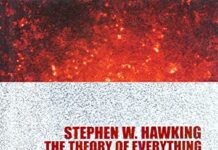
Ebook Info
- Published: 1989
- Number of pages: 708 pages
- Format: PDF
- File Size: 33.72 MB
- Authors: Stephen W. Hawking
Description
To commemorate the 300th anniversary of the publication of Isaac Newton’s Philosophiae Naturalis Principia Mathematica, Stephen Hawking and Werner Israel assembled a series of unique review papers by many of the world’s foremost researchers in cosmology, relativity, and particle physics. The resulting volume reflects the significant and exciting advances that have been made in these fields since the editors’ acclaimed volume, General Relativity: An Einstein Centenary Survey (CUP 1979). Newton’s immense contribution to the physical sciences is assessed, and its relevance to today’s physics made clear. The international group of contributors then chart the major developments in the study of gravitation, from Newtonian gravity to black hole physics. In the fields of galaxy formation, inflationary and quantum cosmology, and superstring unification, the book provides important overviews written by workers involved in the many advances described. By shaping such a wide-ranging and scholarly series of articles into a cohesive whole, the editors have created a fitting and lasting memorial to the man who continues to inspire scientists the world over.
User’s Reviews
Editorial Reviews: Review “…the papers in this collection show us that it [the study of gravitation] is exciting, provocative and stimulating…” Physics Today”..[I] have not found a comparable compilation of valuable information on the current status of general relativity.” American Scientist
Reviews from Amazon users which were colected at the time this book was published on the website:
⭐Great book. Great Author.
⭐The dust-jacket of this 1987 compendium informs the reader that this volume is considered a successor to an earlier compendium: General Relativity, An Einstein Centenary Survey (1980). That is all well and good, except not a great deal of advancement in gravitation theory had occurred between 1980 and 1987.A deeper look:(1) Already, on page 2, Stephen Hawking perpetuates a myth: “Newton seems to have solved the problem originally using…differential calculus…however he did not think that calculus was suitable for publication in the ‘Principia’…he therefore developed a new method.” (Now, consult De Gandt, Force and Geometry in Newton’s Principia).(2) Steven Weinberg: “So, reductionism has its limits.” (page 14) and “…in the early 1970’s string theorists continued to beaver away in obscurity, not getting promoted.” (page 16).(3) Roger Penrose: “I would anticipate that the appropriate theory which replaces our present quantum ideas must, when it comes, exceed even quantum mechanics in its mathematical beauty, economy and grandeur.” (page 34). (2022: read Penrose’s The Road To Reality).(4) Clifford Will: “Newtonian gravity is a linear theory…but, in most relativistic theories of gravity, gravity is nonlinear…” (page 108). (2022: study Poisson and Will’s text of Gravity).(5) Thibault Damour: “Einstein’s classic paper of 1916, Foundations of General Theory of Relativity, is comparable with Newton’s ‘Principia’ both in its importance for physics and its structure–which consists, after a conceptual introduction, of a formal mathematical part followed by a physical part where connection is made with the natural world.” (page 192). So, study Einstein’s paper !(6) Werner Israel recalls Bekenstein’s proposal advocating “the heretical idea that the area of a black-hole was the same thing as its entropy ” had no takers. (page 263) and Hawking’s report black-hole explosions “aroused strong opposition …skepticism was prolonged and virtually unanimous.” (page 265).(7) Kip Thorne: “If gravitational waves can be detected and studied, they will create a revolution in our view of the universe comparable to or greater than that which resulted from the study of radio waves.”and “Unfortunately Weiss was unable to obtain funding to push forward with a significant experimental effort.” (page 414).(8) Alexander Vilenkin: “Gravitational radiation from an oscillating loop carries energy and momentum, as a result the cosmic loop can accelerate like a rocket.” (page 519).(9) Stephen Hawking: “…one has to appeal to the weak anthropic principle. It is only in the expanding phase that intelligent beings can exist to answer the question, why is entropy increasing in the same direction of time as that in which the universe is expanding ? (page 649) and “In general relativity time is just a coordinate that labels events in the universe…time does not have any meaning outside the spacetime manifold.” (page 651).(10) John Schwarz writes of superstring unification: “The long-term prospects for the subject appear very bright.” (page 673). (2022: How I wish that had turned out to be so. In a sense, I still wish it so.).
Keywords
Free Download Three Hundred Years of Gravitation 1st Edition in PDF format
Three Hundred Years of Gravitation 1st Edition PDF Free Download
Download Three Hundred Years of Gravitation 1st Edition 1989 PDF Free
Three Hundred Years of Gravitation 1st Edition 1989 PDF Free Download
Download Three Hundred Years of Gravitation 1st Edition PDF
Free Download Ebook Three Hundred Years of Gravitation 1st Edition
